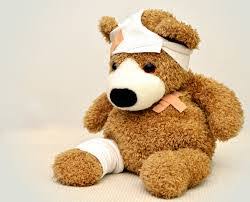Course Options
Emergency First Aid at Work + AED [EFAW + AED]
Emergency First Aid at Work + AED AEDs or Defibrillators are becoming more prevalent not just in public places but workplaces too. Whether you have an AED or not, why not supplement your approved Emergency First Aid at Work course with the extra knowledge of how to use an AED. The requirement to train in the use of an AED will soon be mandatory Aims To provide Emergency First Aiders with the knowledge & skills to summon help & give safe, prompt & effective emergency first aid to a casualty in the workplace following an injury or illness using materials to hand and/or HSE approved first aid equipment. it will also provide the confidence and knowledge to use an AED confidently and accurately. Objectives By the end of this course, the student will be able to: State the role of the Emergency First Aider Carry out a primary survey of a casualty To place an unconscious casualty into the recovery position Carry out effective rescue breathing to current Resuscitation Council guidelines Carry out effective CPR to current Resuscitation Council guidelines Use an AED as appropriate to Resusitation Council Guidlines Recognise and deal with Minor & major cases of bleeding To recognise and treat a patient suffering from medical shock Recognise & treat medical emergencies as identified by student group. Syllabus On completion of training, successful candidates should be able to: understand the role of the first-aider, including reference to: – the importance of preventing cross infection; – the need for recording incidents and actions; – use of available equipment; assess the situation and circumstances in order to act safely, promptly and effectively in an emergency; administer first aid to a casualty who is unconscious (including seizure); administer cardiopulmonary resuscitation; place a casualty in the safe airway position; administer first aid to a casualty who is choking; administer and use an automatic external defibrillator administer first aid to a casualty who is wounded and bleeding; administer first aid to a casualty who is suffering from shock; provide appropriate first aid for minor injuries (including small cuts, grazes and bruises, minor burns and scalds, small splinters). Certificate validity, requalification and refresher training All first-aid training certificates, whether FAW, EFAW or some other appropriate training, are valid for three years. Employers need to arrange retraining before certificates expire. The FAW requalification course lasts two days. If the first-aider does not retrain or requalify before the expiry date on their current certificate they are no longer considered competent to act as a first-aider in the workplace. They can requalify at any time after the expiry date by undertaking the two-day requalification course.An EFAW requalification course should be of the same duration and content as the initial EFAW course. HSE strongly recommends that first-aiders undertake annual refresher training during any three-year FAW/EFAW certification period. Although not mandatory, this will help qualified first-aiders maintain their basic skills and keep up-to-date with any changes to first-aid procedures. HSE does not specify the design of these courses. Employers should also encourage first-aiders to regularly review their course manual and any other instructional materials and allocate them time to do this. It will further help to maintain their first-aid skills. Employers should keep a record of first-aiders and certification dates to help with the timely arrangement of further training.
First Aid at Work [FAW]
First Aid at Work [ FAW ] FAW training includes EFAW and also equips the first-aider to apply first aid to a range of specific injuries and illnesses
Emergency First Aid at Work - Outdoor + Paediatric CPR + AED

This course covers procedures for attending to injuries or illnesses more likely to be encountered in the pre-school or school setting. Both life-threatening and less serious first aid needs are covered. Meets the requirements of OFSTED. The Statutory Framework for the Early Years Foundation Stage (published by the Department for Education) states "at least one person who has a current paediatric first aid certificate must be on the premises at all times when children are present. There must be at least one person on outings who has a current paediatric first aid certificate" - this qualification fulfils this requirement. Who Should Attend? This course is of particular interest to: Registered Childminders, Nannies & Babysitters Teachers (Nursery, Primary and Junior) People working with or interested in working in the field of childcare, or anyone with a professional or non-professional responsibility for children. Content: This qualification consists of two units: Emergency Paediatric First Aid Managing paediatric illness, injuries and emergencies Unit 1 - Emergency Paediatric First Aid Learning Outcomes: Understand the role and responsibilities of the paediatric first aider Be able to assess an emergency situation safely Be able to provide first aid for an infant and a child who: is unresponsive and breathing normally is unresponsive and not breathing normally has a foreign body airway obstruction has external bleeding Understand how to provide first aid to an infant and a child who is suffering from shock Understand how to provide first aid to an infant and a child with anaphylaxis Unit 2 - Managing paediatric illness, injuries and emergencies Learning Outcomes: Be able to administer first aid to an infant and a child with: injuries to bones, joints and muscles head and spinal injuries Understand how to administer first aid to an infant and a child: with conditions affecting the eyes, ears and nose with a chronic medical condition or sudden illness who is experiencing the effects of extreme heat or cold who has sustained an electric shock with burns or scalds who has been poisoned who has been bitten or stung with minor injuries Understand how to complete records relating to illnesses, injuries and emergencies Assessment: Candidates are assessed by ongoing practical assessment, assignment and oral examination. On completion, students receive a Paediatric First Aid Certificate, valid for 3 years
Emergency Paediatric First Aid

This course covers procedures for attending to injuries or illnesses more likely to be encountered in the pre-school or school setting. Both life-threatening and less serious first aid needs are covered. Meets the requirements of OFSTED. The Statutory Framework for the Early Years Foundation Stage (published by the Department for Education) states "at least one person who has a current paediatric first aid certificate must be on the premises at all times when children are present. There must be at least one person on outings who has a current paediatric first aid certificate" - this qualification fulfils this requirement. Who Should Attend? This course is of particular interest to: Registered Childminders, Nannies & Babysitters Teachers (Nursery, Primary and Junior) People working with or interested in working in the field of childcare, or anyone with a professional or non-professional responsibility for children. Content: Emergency Paediatric First Aid Learning Outcomes: Understand the role and responsibilities of the paediatric first aider Be able to assess an emergency situation safely Be able to provide first aid for an infant and a child who: is unresponsive and breathing normally is unresponsive and not breathing normally has a foreign body airway obstruction has external bleeding Understand how to provide first aid to an infant and a child who is suffering from shock Understand how to provide first aid to an infant and a child with anaphylaxis
Emergency First Aid at Work inc Paediatric CPR + AED
Emergency First Aid at Work inc Paediatric CPR + AED
Emergency First Aid at Work - Outdoor + Paediatric CPR + AED
Emergency First Aid at Work - Outdoor + Paediatric CPR + AED
Emergency First Aid at Work + Forestry
This is a full day attendance and assessed course where you’ll learn the theory and practical skills to perform first aid until the medical professionals take over. This course builds on the required skills, knowledge and understanding from Emergency First Aid at Work to give you the critical breadth and depth you need in the Forestry industry. At the end of the course you’ll get a certificate of training in Emergency First Aid at work +F.